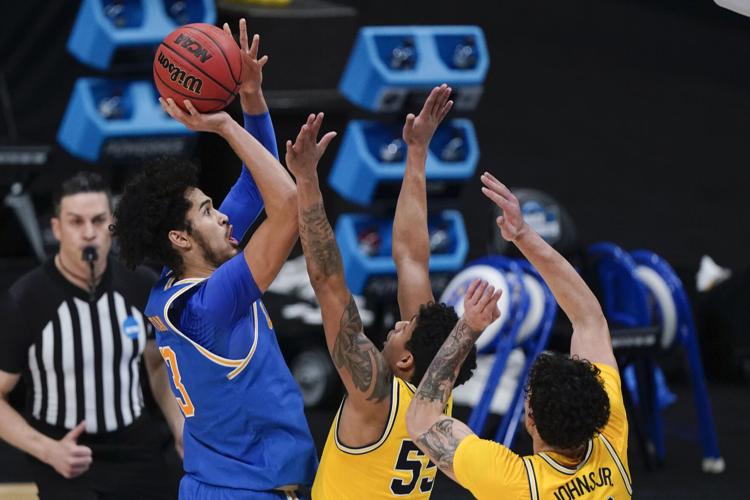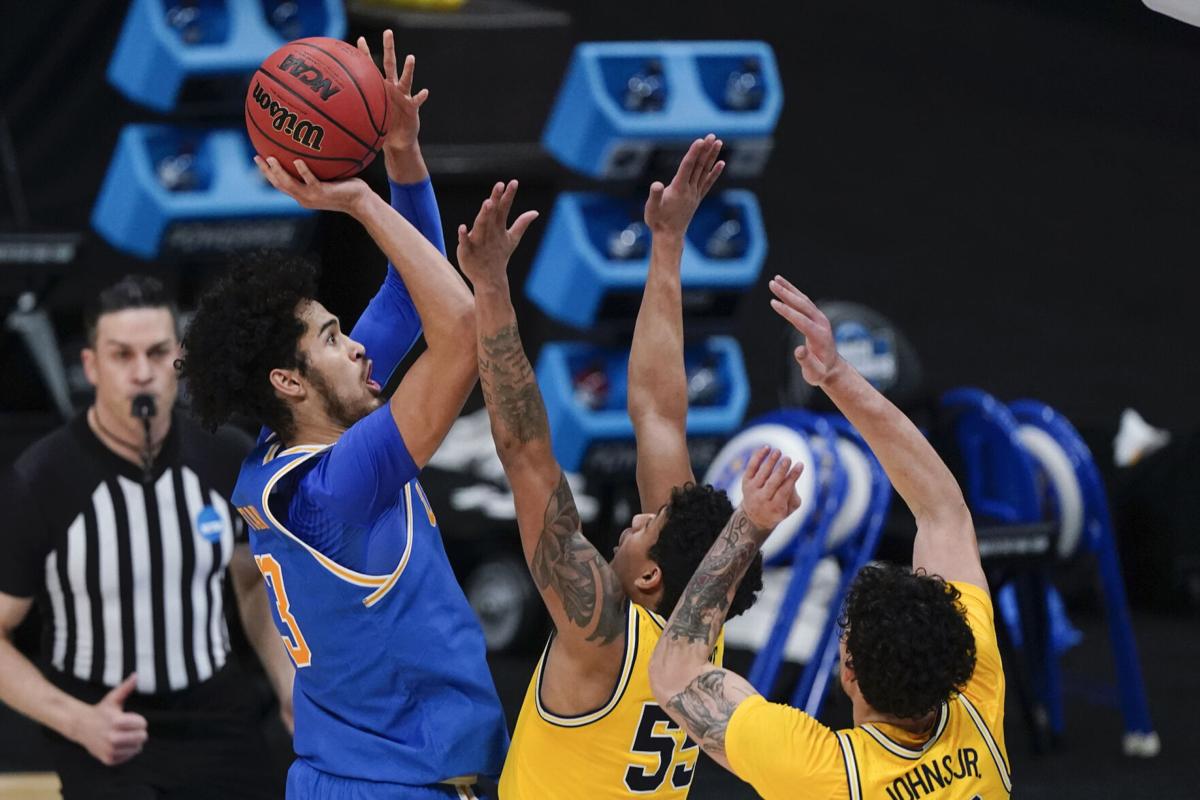The Pac-12’s offseason wasn’t as successful as its postseason, but that was never a realistic possibility.
It was never going to fare as well against the transfer portal and the NBA Draft as it did against unsuspecting opponents in the NCAA Tournament.
The combined lure of professional contracts and fresh starts and more playing time was far too great to prevent some top talents from leaving the conference.
But clearly, the exodus could have been much worse. On balance, the outflow of talent wasn’t severe enough to derail the collective momentum built during the Pac-12’s scintillating run through March.
With the deadlines for players to transfer (July 1) and remain in the NBA Draft (July 7) having come and gone, the Hotline offers the following assessment of key developments for each team.
Notes:
We are not listing every arrival and departure.
If late-breaking draft or transfer news breaks, we will update the relevant sections below.
Projections for the 2021-22 conference race will be published next week.
Winner: UCLA. Yes, the Bruins lost Chris Smith to the draft, but he was injured during the Final Four run and not expected to return. Meanwhile, Johnny Juzang, the breakout star of the NCAAs, announced Wednesday night that he’s coming back for an encore, along with big man Cody Riley. Add five-star freshman Peyton Watson and big man Myles Johnson (Rutgers), who gives UCLA the rim protector it was missing, and the roster is stronger than it was in March. If the Bruins aren’t the preseason No. 1, they’re assuredly No. 2 or 3. And when expectations are high for the 11-time national champions, the entire conference benefits.
Loser: Utah. The rotation was largely gutted with the transfers of Timmy Allen, Pelle Larsson, Rylan Jones, Ian Martinez and Alfonso Plummer, who combined for 50 points per game last season. We believe Craig Smith was an excellent hire who could very well have the Utes playing at a higher level in two years than they did under Larry Krystkowiak. But the immediate outlook is murky. The arrival of David Jenkins (UNLV) will help, as will the return of former Ute Both Gach (Minnesota). But Smith isn’t left with much to work with in Year One.
Winner: Oregon State. The surprise team of the NCAAs received good news in recent days as Warithe Alatishe, Roman Silva and Maurice Calloo all opted for another season in Corvallis. Their presence solidifies a roster that includes several inbound transfers and returning rotation players but not, for the first time in seven seasons, anyone named Thompson. (Ethan is staying in the draft.) While the scales are tipping favorably for Oregon State, that comes with a price: the pressure to perform.
Loser: Arizona. Loads of turnover in Tucson, starting at the top of the program with the arrival of rookie coach Tommy Lloyd. The additions of Oumar Ballo (Gonzaga) and Pelle Larsson (Utah) will help Lloyd’s cause, but the Wildcats lost far more proven production than they gained with the departures of James Akinjo, Jemarl Baker, Jordan Brown and Terrell Brown. The first year of a new era figures to be difficult, especially given the overall strength of the conference. Then again, low expectations provide Lloyd with a chance to produce an upside surprise.

UA is bringing in some talent such as former Utah guard Pelle Larsson, right, but the Wildcats also lost several key players.
Winner: Washington. The Huskies lost a slew of rotation players, but given the product on the floor last season, we’re not sure that’s a bad thing. In fact, the turnover was probably necessary for coach Mike Hopkins to have any chance to stop the backslide and save his job. The arrivals of Daejon Davis (Stanford), P.J. Fuller (TCU), Terrell Brown (Arizona) and Emmitt Matthews (West Virginia) provide a solid core from which Hopkins can start the recovery process.
Losers: Cal and Stanford. The Bears lost their best player, Matt Bradley, to San Diego State while Stanford will be without Ziaire Williams and Oscar da Silva, who are staying in the draft. We turned the Bears and Cardinal into a combined entry because the outlook for the once-thriving Bay Area remains bleak. Cal is forever stuck on the Pac-12’s bottom tier, while Stanford cannot escape mediocrity. It’s the worst twin stretch of play from the teams in decades. No, their academic standards don’t mix well with the transfer portal, but the coaching needs to improve.
Winner: Oregon. Yes, the Ducks lost two of the conference’s top players, Chris Duarte and Eugene Omoruyi, to the draft. But they have secured the services of three elite Power Five transfers in De’Vion Harmon (Oklahoma), Jacob Young (Rutgers) and Quincy Guerrier (Syracuse), who should make immediate impacts, and they’re adding five-star big man Nathan Bittle. What’s more, coach Dana Altman has proven he can assimilate newcomers at a higher level than his peers, a key factor in our evaluation.
Loser: Arizona State. Marcus Bagley’s return provides a building block for coach Bobby Hurley after a disappointing season. And the Sun Devils added potential starters in Jay Heath (Boston College) and Marreon Jackson (Toledo), plus five-star center Enoch Boakye. But consider the talent out the door: Remy Martin, Alonzo Verge, Josh Christopher, Holland Woods, Jalen House and Taeshon Cherry — that’s 60 points per game. We need evidence that Hurley’s program can thrive with an overhauled rotation before we believe it likely. What Altman does on a yearly basis isn’t easy to accomplish.
Winner: USC. There was no chance — none, zero, zip — that Evan Mobley would return, and Tahj Eaddy appears to be staying in the draft. But the Trojans received good news from Isaiah Mobley, who played well in the NCAAs but isn’t quite ready for the next step. Add the arrival of Boogie Ellis (Memphis), and the roster turnover for USC, as for the Pac-12 in general, could have been worse.
Loser: Colorado. First, we should acknowledge the recruiting class, which is No. 1 in the conference and No. 11 nationally and a prime source of optimism for CU. That said, the Buffaloes lost three key rotation players to the portal, D’Shawn Schwartz, Jeriah Horne and Dallas Walton, in addition to NBA-bound McKinley Wright. Essentially, we believe the recruiting class, while deep, doesn’t possess enough instant-impact talent to offset the losses to the draft and transfer portal. In other words, the Buffs are better positioned for the future than for the present.
Winner: Washington State. Even if Isaac Bonton remains in the draft, which is our assumption — he has yet to make his decision public — the Cougars landed on the right side of the offseason ledger. Their departures were limited in impact, and their arrivals are loaded with potential, in particular South Alabama transfer Michael Flowers and four-star prospect Mouhamed Gueye, one of the most heralded recruits in school history. The upward trajectory should continue in Pullman.






